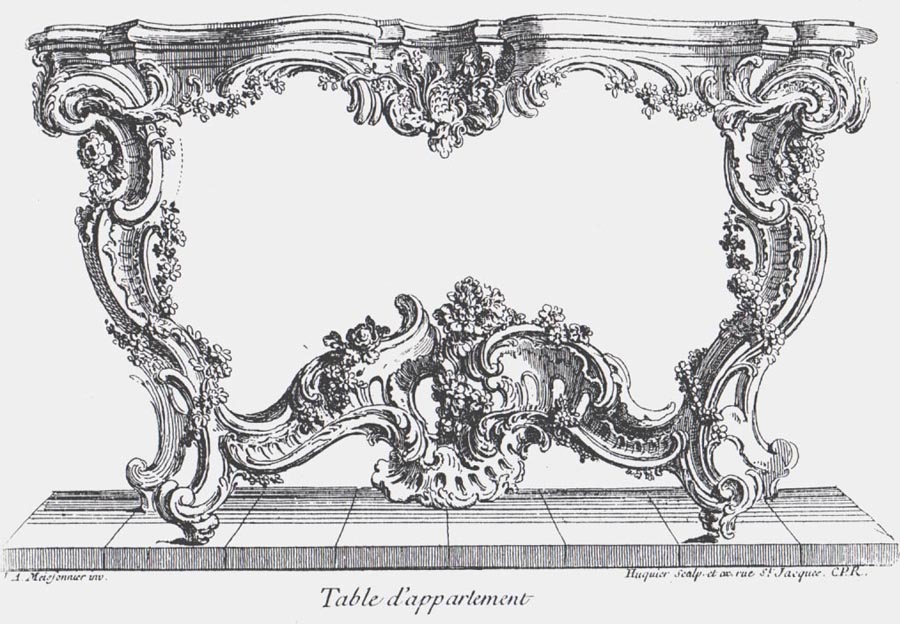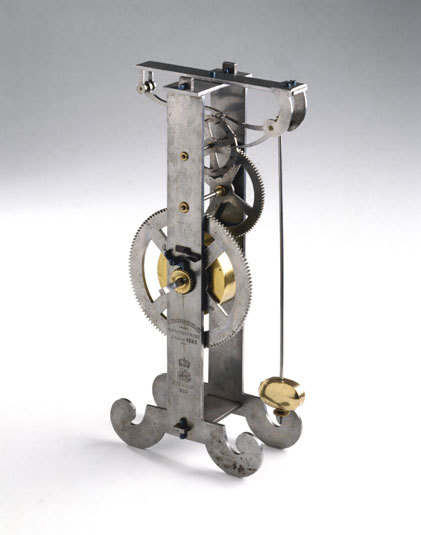Please note that for next week there are TWO readings. The first is by William Morris, "The Revival of Handicraft" -- this is a 'primary source'. The second is by Rafael Cardoso, "Craft Versus Design: Moving Beyond a Tired Dichotomy" -- this is a 'secondary source', that is, one which reflects upon and analysis or responds to a primary source. Please read both for next week's lecture.
Thursday, July 29, 2010
What do you think?
Wednesday, July 28, 2010
Suggested Reading: new!
A list of supplemental readings has been added to this blog under the 'Information' tab-- please take a moment to browse the titles. You may find something of interest. This list will be updated regularly.
Monday, July 26, 2010
Blog Assignment 3: Brief
View the full brief here:
This week, 'construction decorated' or 'decoration constructed'??

This week, 'construction decorated' or 'decoration constructed'??
 |
| http://tordboontje.com/projects/wardrobes/fig-leaf/ |

 |
| Tord Boontje Wardrobe "Fig Leaf" 2008 |
Student Learning Support Services: Special ESOL Session
SLSS is running an ESOL Group for 1st year international or non-English speaking background arch and design students in Trimester Two. The programme aims to further develop the language ability of such students and offer them opportunities to discuss academic issues such as understanding assignment questions. The group meets every Tuesday 11-12 in the Group Study Room in the Architecture and Design Library and will run until the end of the trimester.
For more information email Dr.Xiaodan Gao at xiaodan.gao@vuw.ac.nz
For more information email Dr.Xiaodan Gao at xiaodan.gao@vuw.ac.nz
Saturday, July 24, 2010
Devon D'Aoust: Sensuous Impulse: A Kantian View of Design
Blog assignment 2: from Devon D'Aoust

"Sensuous impulse" is one of two terms coined by Immanuel Kant in his philosophy of aesthetics, specifically relating to the way in which we perceive something. If an object is created with only the sensuous impulse in mind, it is purely aesthetic, created only for beauty. Conversely, if an object is created with only the "formal impulse" in mind, it is purely logical, or functional.
The Rococo movement of the eighteenth century is perhaps the peak of sensuous impulse in design. Its elaborateness was a simple by-product of the wealth of the burgeoning upper class in France, and the prolonged period of peace the country experienced during that time. Items with such elaborate ornamentation and frivolous detail, such as the "table d'appartement" by Juste-Aurèle Meissonier (pictured above), could be easily afforded, and were considered an outwards expression of one's wealth and security. In modern times, however, as humanity realises the world is no longer brimming with the natural resources it was in past years, conservatism and sustainability is the predominant trend in design, appealing to our formal impulse. Therein lies a question, though: in a modern world in which form follows function, is sensuous impulse in design relevant, or even appropriate? The answer is yes, and though sustainability and conservation of natural resources are dominant factors in modern design, the world needs things that appeal to the sensuous impulse. Clothing, for example, is designed primarily with aesthetics in mind, and is a large component of self expression. Beautiful objects keep society happy; functional objects keep society running.
The Rococo movement of the eighteenth century is perhaps the peak of sensuous impulse in design. Its elaborateness was a simple by-product of the wealth of the burgeoning upper class in France, and the prolonged period of peace the country experienced during that time. Items with such elaborate ornamentation and frivolous detail, such as the "table d'appartement" by Juste-Aurèle Meissonier (pictured above), could be easily afforded, and were considered an outwards expression of one's wealth and security. In modern times, however, as humanity realises the world is no longer brimming with the natural resources it was in past years, conservatism and sustainability is the predominant trend in design, appealing to our formal impulse. Therein lies a question, though: in a modern world in which form follows function, is sensuous impulse in design relevant, or even appropriate? The answer is yes, and though sustainability and conservation of natural resources are dominant factors in modern design, the world needs things that appeal to the sensuous impulse. Clothing, for example, is designed primarily with aesthetics in mind, and is a large component of self expression. Beautiful objects keep society happy; functional objects keep society running.
Thursday, July 22, 2010
Revised hand-in time: blog assignments due midnight Friday
To give students in Friday afternoon tutorials time to revise blog assignments following feedback from their tutorial sessions, the blog assignments will now be due AT MIDNIGHT on Fridays (rather than 6pm). Please note this change applies to all streams.
Wednesday, July 21, 2010
Blog Assignment 1: selected posts
Examples of great responses to Blog Assignment 1 are now posted on each tutor's blog page. Please have a look at these to see the kinds of responses that we hope to recieve from you. Also, please comment or offer feedback to these post (or any others you find inspiring or disturbing) on this blog.
There have been a number of clock designs throughout time beginning with the sundial, the hourglass, the water clock, and then then pendulum and quartz clocks. The invention of the clock has changed the world by allowing us to measure our day in increments that were impossible with just the sundial. Moreover, it has separated our movement through time from that of nature and has contributed to a number of other world altering innovations; global time zones, mass-production, the 9-5 work day, and eating at a particular time rather than eating when we are hungry, to name a few. Interestingly, for such an important innovation there appears to still be much contention on the actual civilization responsible for it’s original design. However, that being said, Galileo is cited as the inventor of the pendulum clock, though as he never built one the credit for the first built model goes to a Christian Huygens, 1656.

References:
Bellis, Mary. . The Invention of Clocks. InventorsGuide.
Images: http://www.sciencemuseum.org.uk/images/object_images/535x535/10308827.jpg
Saturday, July 17, 2010
Blog assignment 2: brief
This week's blog assignment asks you to consider the role of the "sensuous impulse" in design. You can find the full brief here:
theverymany: Marc Fornes and his studio are blurring the boundaries of architecture and design using advanced digital design technologies and manufacturing. This process allows fluid compositions and the irregularity of the "sensuous impulse" to emerge.
Check your blog link!
Everyone who submitted blog assignment one has been added to his or her tutor's blog, under "student blogs." For example, if you are in one of Nan O'Sullivan's two streams, your name should appear here. Please check to see if your link is working and that it appears on your tutor's blog. If it is missing or the link is broken, please email margaret.petty@vuw.ac.nz immediately.
Wednesday, July 14, 2010
Tuesday, July 13, 2010
Design in a Time of Uncertainty
[optional reading]
The importance of critical reflection in design today (from Designobserver):
By Constantin Boym

Postcard image by Ken Brown.
Since the beginning of professional industrial design — throughout the entire 20th century and into the first decade of the 21st — a designer has been a figure of confidence and authority. He (rarely, she) provided answers, solved problems, knew more than the public could possibly knew. A notion of an unsure designer, a questioning designer, or, heaven forbid, a doubtful designer would appear almost oxymoronic, and certainly unprofessional.
Perhaps the new decade will go down in history as marking the outset of Design Uncertainty. For the first time ever, designers are willing to question, openly and publicly, the nature of their profession and whether they are doing the right thing. This year, for the first time, an interrogation mark appeared in the title of the National Design Triennial at the Cooper-Hewitt. In the Netherlands, Eindhoven Design Academy’s 2010 exhibition in Milan expressed the same spirit of inquiry with an even more succinct title, a simple “?”
The reasons for self-searching and doubt are obvious, and they are not pretty. Two seemingly never-ending wars have contributed to political uncertainty and fueled fears of terrorism. The economic meltdown of 2008 continues to reverberate around the world. An unimpeded flood of oil gushes out in the Gulf of Mexico, in spite of the feats of the world’s best experts to stop it. Alice Rawsthorn, writing in The New York Times, recently captured the spirit of our time when she referred to design as “a quest for meaning in a dystopian era.” This existential mission, rather than a pursuit of new shapes, is going to define the design effort for years to come. And any search for meaning always starts with a question.
Wednesday, July 7, 2010
Welcome to DSDN171: Design in Context
"Seed Cathedral" Shanghai World Expo 2010, Thomas Heatherwick
Design in Context explores the many ways in which design and technology mediate and contribute to changes—social, cultural, personal, political, and ecological—in the human environment. To understand and contextualise these engagements, this course will focus on core issues and ideas found at the intersections of design and culture—presently and historically. Investigating these nexus points and looking for common threads connecting design thinking historically, DSDN171 will consider such themes as: the curve and the straight line, design as cultural reform, the crime of ornament, standardisation/rationalisation, modernity, media, and 'modern vision'; as well as the debates around craft and design, teechnology, and post-modernity and 'remix' cultures. Please review the course outline for details of lecture and tutorial times as well as course aims and expectations (including hand-in dates).
Subscribe to:
Posts (Atom)



